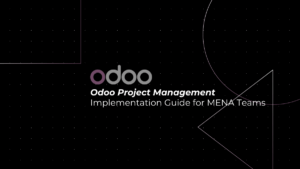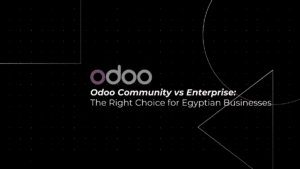
In the dynamic landscape of Information Technology (IT), data has emerged as the linchpin of success. Organizations are now utilizing data-driven approaches to transform their IT operations, streamline processes, and make strategic decisions. Among the array of tools available for data analysis, Zoho Analytics stands out as a powerful solution. This article explores how Zoho Analytics empowers IT professionals to embark on a journey of data-driven IT transformation, from gaining insights to making strategic decisions.
Table of Contents
ToggleUnderstanding the Power of Data-driven IT Transformation
Data-driven IT transformation involves leveraging data to enhance IT operations, efficiency, and strategic decision-making. It encompasses the collection, analysis, and utilization of data to improve processes, optimize resource allocation, enhance security, and align IT with organizational goals.
The key stages of data-driven IT transformation include:
1. Data Collection
Data Sources: Collecting data from various IT systems, applications, and devices is the initial step in data-driven IT transformation. This data can be sourced from:
- Network Performance: Data on network latency, bandwidth usage, packet loss, and throughput.
- Hardware Utilization: Information on the usage and performance of servers, storage devices, routers, and switches.
- Application Logs: Logs generated by software applications, which can provide insights into application behavior, errors, and performance bottlenecks.
- User Activity: User data, including login times, activity logs, and behavior patterns, to understand how users interact with IT systems.
- Security Incidents: Data related to security events, such as intrusion attempts, malware detections, and unauthorized access.
Data Integration: To effectively collect data from these diverse sources, IT teams use tools like Zoho Analytics to centralize and integrate data. This integration ensures that relevant information is accessible in a unified platform.
Data Quality: Ensuring data quality is essential. Data should be accurate, up-to-date, and free from errors. Data cleansing and validation processes are often implemented to maintain data integrity.
2. Data Analysis
Tools and Techniques: Once data is collected, it needs to be analyzed. Data analysis involves using various tools and techniques, such as:
- Descriptive Analytics: Summarizing data to gain insights into its characteristics and trends.
- Diagnostic Analytics: Identifying the causes of issues or anomalies in the data.
- Predictive Analytics: Using historical data to make predictions about future trends or events.
- Prescriptive Analytics: Recommending actions based on the analysis to address specific challenges.
Statistical Analysis: Statistical methods and algorithms are applied to uncover patterns, correlations, and anomalies within the data. This statistical analysis can include regression analysis, clustering, and hypothesis testing.
Visualization: Data analysis often involves creating visual representations of data using charts, graphs, and dashboards. These visuals make it easier for IT professionals to comprehend complex information.
3. Insights Generation
Actionable Insights: The analysis results in the generation of actionable insights. These insights are valuable pieces of information that help IT teams:
- Understand Current Issues: Insights provide clarity on existing IT problems or bottlenecks.
- Predict Future Challenges: By identifying trends and patterns, insights can help predict potential future challenges.
- Identify Opportunities for Improvement: Insights point out areas where IT operations or systems can be optimized.
Anomaly Detection: Insights often include the identification of anomalies or deviations from expected behavior. These anomalies may indicate issues or opportunities for improvement.
Scenario-Based Insights: Insights may be scenario-based. For example, IT teams might gain insights into how certain changes in network configurations impact performance or security.
4. Decision Support
Informed Decision-Making: Armed with insights, IT professionals can make informed decisions. These decisions can span various aspects of IT management, including:
- Infrastructure Optimization: Deciding whether to scale up or down IT infrastructure based on usage trends and performance analysis.
- Cybersecurity Measures: Implementing or enhancing security measures in response to identified vulnerabilities or threats.
- IT Investments: Allocating budget and resources to areas where improvements or innovations are warranted.
Risk Mitigation: Informed decisions also help mitigate risks. For example, data analysis might reveal that a certain hardware component is prone to failures, prompting proactive replacements to avoid downtime.
5. Continuous Improvement
Iterative Process: Data-driven IT transformation is an iterative process. It involves continuous monitoring of data, refining analysis techniques, and adjusting strategies based on the evolving needs of the business and technological advancements.
Feedback Loop: Insights and data analysis feedback into the data collection process. As new data is collected and analyzed, it refines and informs ongoing decision-making and strategies.
Agility: Data-driven IT transformation enables IT teams to be agile and responsive to changing circumstances. It allows them to adapt quickly to emerging challenges and opportunities.
Benchmarking: Continuous improvement often involves benchmarking IT performance against industry standards or best practices. This helps identify areas where the organization can excel.
The Role of Zoho Analytics in Data-driven IT Transformation
Zoho Analytics is a business intelligence and data analytics platform that offers a wide range of features and capabilities tailored for data-driven decision-making. Here’s how Zoho Analytics plays a pivotal role in the journey of IT transformation:
1. Data Integration
Zoho Analytics allows IT teams to seamlessly integrate data from various sources, including databases, cloud services, spreadsheets, and on-premises systems. This feature simplifies the process of data collection, ensuring that all relevant information is accessible in one central location.
2. Data Visualization
Data visualization is a powerful tool for understanding complex IT data. Zoho Analytics offers a variety of visualization options, including charts, graphs, and dashboards. These visuals make it easier for IT professionals to identify trends and patterns.
3. Advanced Analytics
Zoho Analytics provides advanced analytics capabilities, including predictive analytics and machine learning. IT teams can leverage these tools to forecast IT resource needs, identify security threats, and optimize IT infrastructure.
4. Customizable Dashboards
Zoho Analytics allows IT professionals to create customized dashboards that display real-time IT performance metrics. These dashboards provide a holistic view of IT operations, helping teams make timely decisions.
5. Collaboration and Sharing
Collaboration is essential in IT transformation. Zoho Analytics facilitates collaboration by enabling teams to share reports and dashboards securely. This feature ensures that relevant stakeholders have access to critical insights.
6. Data Security
Data security is a top priority in IT. Zoho Analytics includes robust security features, such as role-based access control and encryption, to protect sensitive IT data.
Zoho Analytics Integrations for IT Transformation
These integrations amplify the power of Zoho Analytics, making it an even more indispensable tool for IT professionals. Here are some key integrations:
1. Zoho CRM Integration
Objective: Streamlining Customer Relationship Management
- Data Sync: Zoho Analytics can seamlessly integrate with Zoho CRM, allowing you to synchronize and analyze customer data effortlessly.
- Sales Insights: This integration enables IT teams to gain insights into sales trends, customer behavior, and performance metrics. By examining this data, organizations can make data-driven decisions to enhance sales strategies and customer interactions.
- Service Metrics: IT professionals can access service-related metrics, such as support ticket trends, resolution times, and customer feedback, which can be vital for IT support and service improvement.

2. Zoho Projects Integration
Objective: Project Management and Resource Optimization
- Project Analytics: By integrating Zoho Analytics with Zoho Projects, IT leaders can gain insights into project timelines, resource allocation, and task completion rates. This data is invaluable for optimizing project management and ensuring that IT projects are delivered on time and within budget.
- Resource Utilization: Understanding how IT resources are allocated and utilized across various projects is crucial. Zoho Analytics can provide detailed resource utilization reports, helping IT managers make informed decisions about resource allocation and capacity planning.
3. Zoho Creator Integration
Objective: Custom Application Data Analysis
- Custom Application Data: Many organizations use custom applications created with Zoho Creator to support unique IT processes. Integrating Zoho Analytics with Zoho Creator allows IT teams to analyze data generated by these applications, providing insights into workflow efficiency and potential areas for improvement.
- Automation Insights: By analyzing data from custom applications, IT professionals can identify automation opportunities. This can lead to the development of more efficient workflows and processes, reducing manual tasks and enhancing productivity.
4. Zoho Desk Integration
Objective: IT Support and Incident Management
- Ticket Analytics: Integrating Zoho Analytics with Zoho Desk offers comprehensive insights into IT support operations. IT managers can monitor ticket volumes, resolution times, customer satisfaction scores, and support agent performance. This data helps in optimizing IT support processes and ensuring high-quality service.
- Incident Trends: By analyzing incident data from Zoho Desk, IT teams can identify recurring issues and causes. This knowledge empowers IT professionals to proactively address underlying problems, reducing incident recurrence and improving IT service reliability.
5. Zoho Books Integration
Objective: Financial and Cost Analysis
- Financial Reporting: For IT departments managing budgets and expenditures, integrating Zoho Analytics with Zoho Books provides access to financial data. This includes expenses related to IT projects, hardware and software costs, and overall IT spending. Analyzing financial data helps in cost control and optimizing IT budgets.
- Cost Allocation: IT leaders can allocate IT expenses to specific projects, departments, or teams using data from Zoho Books. This ensures transparency in cost distribution and helps IT managers make data-driven decisions regarding resource allocation.

6. Zoho Vault Integration
Objective: Security and Access Management
- Access Control Analysis: Zoho Vault integration enables IT teams to analyze access control data. This includes who has access to sensitive systems and data, when access was granted, and any changes in access permissions. Analyzing this information enhances security and ensures compliance with access control policies.
- Password Management: By analyzing password-related data, IT professionals can identify weak passwords or overdue password changes, helping reinforce cybersecurity measures.

By harnessing these integrations, organizations can achieve enhanced IT workflow optimization, improved decision-making, and ultimately, successful IT transformation.
Organizations are increasingly adopting data-driven methodologies to revamp their IT operations, streamline processes, and make strategic decisions. Among the array of tools available for data analysis, Zoho Analytics shines as a powerful solution. Zoho Analytics provides IT professionals with the tools they need to collect, analyze, and utilize data effectively. From optimizing IT operations to making informed strategic decisions, Zoho Analytics empowers IT teams to harness the power of data for IT transformation and success.
What are you waiting for? Book your consultation session now with PyramidBITS, your trusted Zoho partner.




